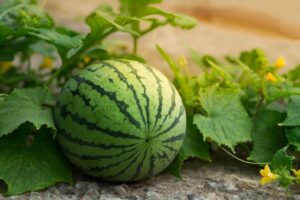
Efficacy of Nemakill on Watermelons
Date: Season 2021 Company: Grupo Sol Honduras Goal: To validate

NEMAKILL is an OMRI listed nematicide for use in organic production to control soil nematodes on food and non-food crops. NEMAKILL is made of natural oils and acts directly when in contact with the insect. NEMAKILL is an effective product to enhance the action of pesticides and fertilizers when they are used in a mixture.
Uses
Can be used to impact nematode populations affecting a broad variety of crops. Nematode populations it affects include sting nematodes, lesion nematodes, root-knot nematodes, rice nematodes, soybean cyst nematodes, lance nematodes, citrus nematodes, stubby root nematodes, needle nematodes, sheath nematodes, Northern root knot nematodes, Columbia root knot nematodes, Southern root knot nematodes, alfalfa stem nematodes, Pratylenchus spp., foliar nematodes, strawberry spider mites, Radopholus simillis, and others.
Use Rate
32 – 48oz/ac
Once it penetrates the soil, NemaKill® acts through contact, inhalation and translaminar action, penetrating the lipid and protein membranes of the nematode’s outer walls, causing collapse and death.




NemaKill® releases chemical alleles that produce nematicidal effects and affect the behavior of nematodes, impairing their mobility and causing paralysis and mortality. These compounds are non-toxic in the rhizosphere.
| Crop | Pest | Rate (L / 200 L water) | Observations |
|---|---|---|---|
| Traditional and export vegetables, berries, extensive crops, flowers and ornamentals. | Meloidogyne spp., Radopholus similis, Pratylenchus spp., Helicotylenchus spp., Tylenchulus spp., Ditylenchus spp. | 2 - 4 | In short-cycle crops, make 3-4 applications per crop cycle at intervals of 15 to 30 days. Start applications 10 days after transplanting or plant emergence. |
| Banana, avocado, citrus, pineapple and other perennials. | 3 - 7 | For perennial crops, apply at intervals of 90 to 120 days. |
Traditional and export vegetables, berries, extensive crops, flowers and ornamentals.
_____________________
Banana, avocado, citrus, pineapple and other perennials.
Meloidogyne spp.,
Radopholus similis,
Pratylenchus spp.,
Helicotylenchus spp.,
Tylenchulus spp.,
Ditylenchus spp.
2 – 4
_____________________
3 – 7
In short-cycle crops, make 3-4 applications per crop cycle at intervals of 15 to 30 days. Start applications 10 days after transplanting or plant emergence.
_____________________
For perennial crops, apply at intervals of 90 to 120 days.

Date: Season 2021 Company: Grupo Sol Honduras Goal: To validate
WE WANT TO HEAR FROM YOU
WE’VE BUILT OUR BUSINESS ON HARD WORK AND TRUST, BY LISTENING TO FARMERS FOR MORE THAN 20 YEARS.